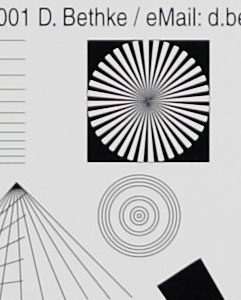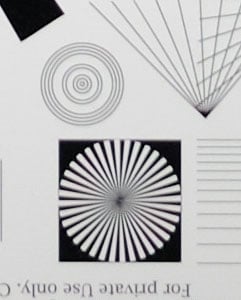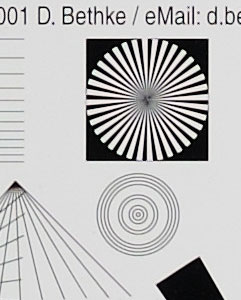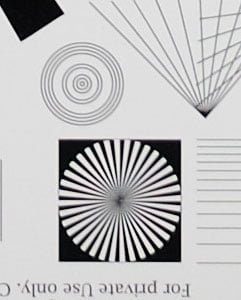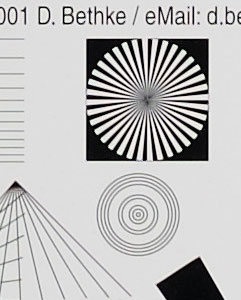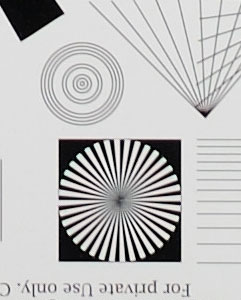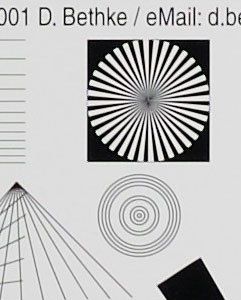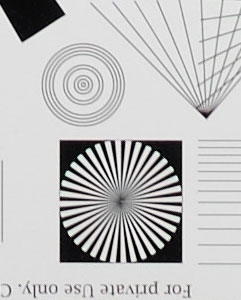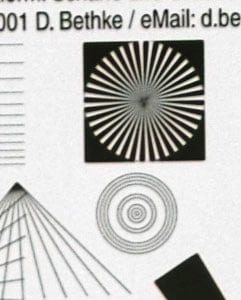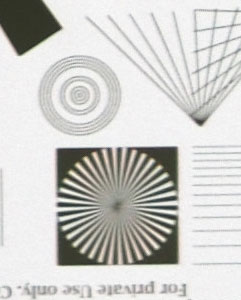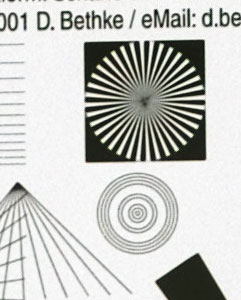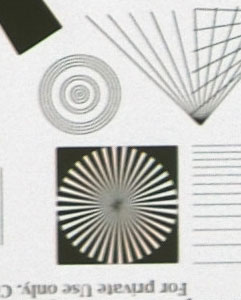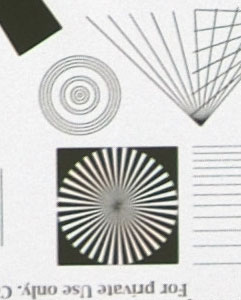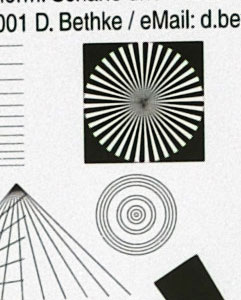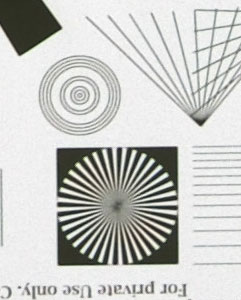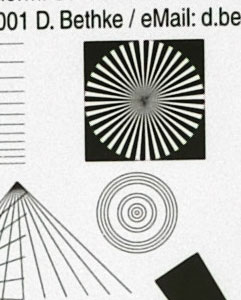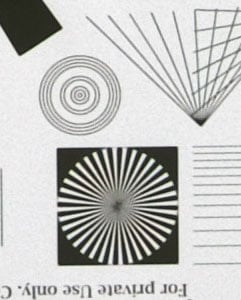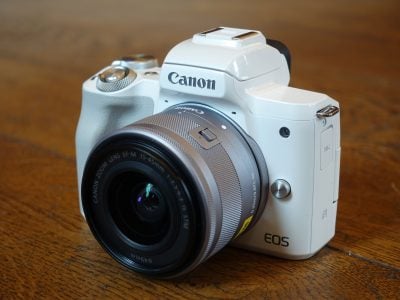Nikon DX Micro 40mm f2.8G review
-
-
Written by Thomas
Quality
Testing: Longitudinal Chromatic Aberration
Axial color (longitudinal CA, loCA) is a very common problem with large aperture primes and is not as easy to correct in post processing (or in-camera) as lateral CAs. Longitudinal CAs create some greenish tint with background subjects and a magenta tint on foreground subjects. The 40/2.8G is certainly not a very large aperture prime but as you can see in the following test-shots it is also affected by this problem.
Below left is the result for the 40/2.8G showing a 100% crop at f2.8. The effect is reduced by stopping down and at f5.6 the greenish (background) and reddish (foreground) hues are almost gone. Processing was done in Capture NX 2 with standard settings meaning lateral CA removal was ON, loCA removal = OFF. Below right you see the results from setting loCA removal to 50% in Capture NX.
Nikon AF-S DX Micro-Nikkor 40mm f/2.8G Longitudinal Chromatic Aberration (loCA) | ||
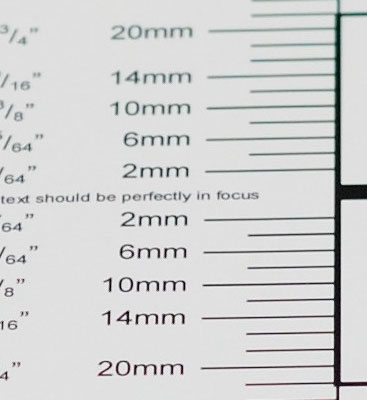 | 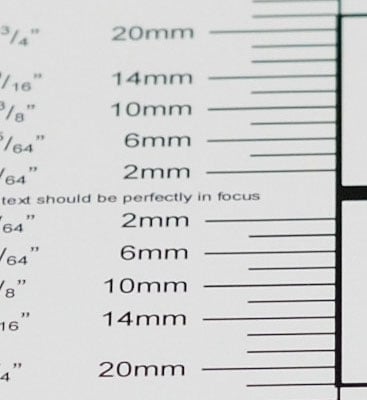 | |
| 100% crop, f2.8, loCA removal OFF in Capture NX2 | 100% crop, f2.8, loCA removal 50% in Capture NX2 | |
Sharpness and contrast
Let’s have a look at the theoretical performance (MTF-charts) of the new lens before analyzing the results from the test-shots:
| Nikon Micro-Nikkor MTF | ||||
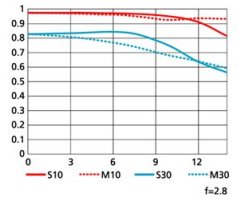 | 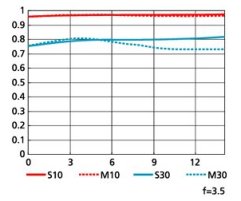 | 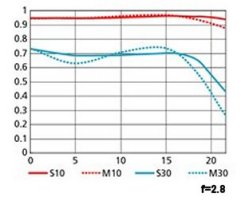 | ||
DX Micro-Nikkor 40mm f/2.8G | DX Micro-Nikkor 85mm f/3.5G VR | VR Micro-Nikkor 105mm f/2.8G | ||
These charts show the lens-performance at the largest aperture. To read these charts you only have to understand that higher values are better and that the closer the dotted and the continuous lines are together the less astigmatism (= resolution depends on the orientation of the test-pattern) the lens displays. The DX-corners where I measure with the D300 are approximately at 12mm on the X-axis.
From the charts the new lens should perform pretty good with very high contrast over the complete image-field and some impressive sharpness in at least half of the image with a graceful roll-off towards the corners. But to really understand what this lens can produce we need to look at real test-shots with a challenging target, the Siemens-stars, with different apertures and different shooting distances. Because performing well at larger magnifications is no easy feat – otherwise people would be only buying extension tubes.
This comparison comes in two parts: center- and corner-performance at normal distances (around 1.4m, 1:35 magnification), followed by center- and corner-performance at macro distances (around 20cm, 1:2.6 magnification).
Processing was done in CaptureNX2 at standard settings, with white-balance adjusted to a neutral white and some exposure compensation to make the brightness match. CA-removal is ON. Focus was achieved as usual live-view based with a little optimization by hand and it was done separate for the center and the corners to avoid any effect from field curvature.
These are all 100% crops!
| Part 1: Center- and corner-performance at standard (1:35) magnification (around 1.4m) Shot from a printed test-target
As already expected from the MTF-chart contrast and sharpness of this lens under standard conditions is very good. The corners are just a tad soft at f2.8, but that’s it. A very impressive performance, indeed! Part 2: Center- and corner-performance at around 1:2.6 magnification (around 20cm)
|
At larger magnifications the center of this lens is also pretty good straight from the largest apertures, which was f3.3 at 1:2.6. But the corner is quite mushy and not up to the standard that you’re used to see at normal shooting distances. So stopping down is required to achieve better image-quality at close-up shots. This normally is not so bad as you might expect: at a magnification of 1:2.6 depth-of-field is razor-thin at f2.8 and normally no natural subject is flat enough to be in focus, coupled with field-curvature of the lens also adding to the challenge of corner to corner sharpness. My own experience says that for getting a pleasing distribution of sharpness across the frame of a shot of 1:2-1:3 magnification you need at least f5.6 or f8.0 for depth-of-field alone. And if you look at the corner-performance of this lens at f8 you see a much improved image-quality which certainly does not stand in the way of producing very sharp macro-shots.
If you’d like to compare the quality of this lens to the Nikon DX Micro-Nikkor 85mm f/3.5G VR and the Nikon AF-S VR Micro-Nikkor 105mm f/2.8G IF-ED, see my Nikon Micro-Nikkor lens comparison.
